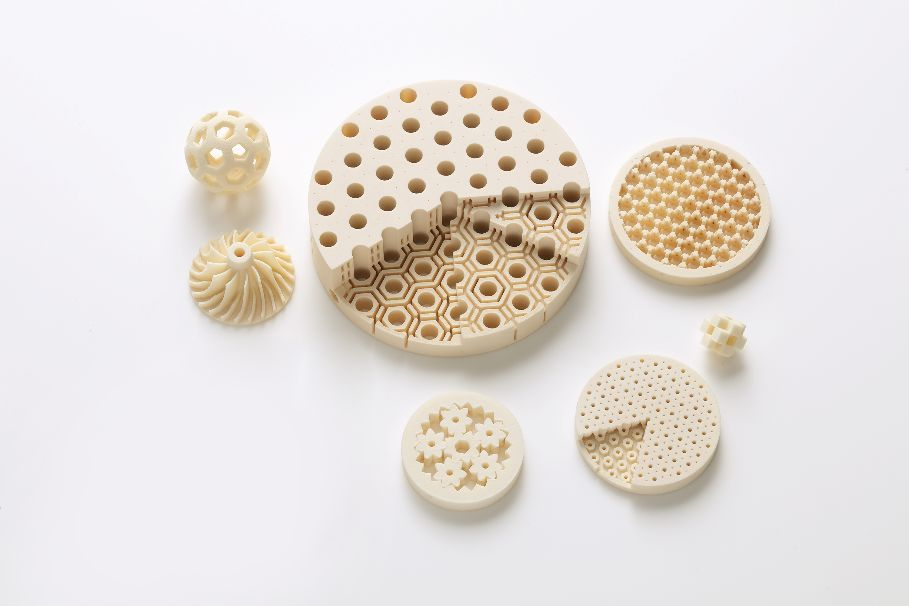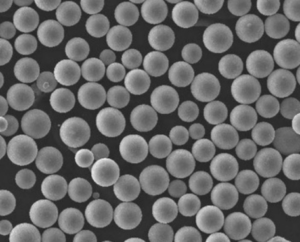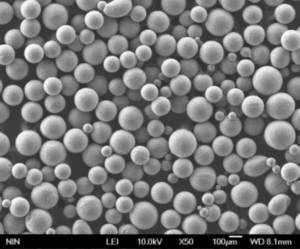3Dプリンティングは次のようにも知られている。 アディティブ・マニュファクチャリングアディティブ・マニュファクチャリングは、従来のサブトラクティブ・マニュファクチャリングに対して提唱された概念である。私たちは、サブトラクティブ・マニュファクチャリングが原材料を切削・焼結して部品を製造するプロセスであること、粉末冶金、切削工程はすべてサブトラクティブ・マニュファクチャリングの一部であることを知っている。では、それに対応するアディティブ・マニュファクチャリング技術とは何を意味するのだろうか?また、積層造形にはどのような技術が使われているのだろうか。この記事では、3Dプリンティングではどのような技術が使われているのか?
3Dプリンティングの原理
3Dプリンティングにはどのような技術が使われているのかという疑問に答える前に、3Dプリンティングの原理を理解する必要がある。3Dプリンティングとは、デジタル・モデル・ファイルをベースとして、粉末金属やプラスチックなどの接合可能な材料を用いて、層ごとにプリントして物体を構築する技術である。
3Dプリントは通常、デジタル技術を駆使した素材プリンターで実現される。3Dプリンターは、金型製作や工業デザインにおける模型製作によく使用され、その後、徐々にいくつかの製品の直接製造に使用されるようになり、この技術を使って部品がプリントされている。
従来の印刷技術や製造プロセスと比較して、3D印刷にはいくつかの特徴がある。第一に、印刷は1回のパスで行われるため、切断や研磨を繰り返す必要がなく、製品の製造工程が簡素化され、生産時間が短縮される。
これにより生産工程が簡素化され、生産サイクルが短縮される。第二に、低コスト、特にバッチ生産という点で、従来の製造に比べ大きなコスト優位性がある。最後に、製品の高度化である。

3Dプリンティング技術
多重伝送装置
溶融積層造形(FDM)とは、さまざまな高温の溶融フィラメント材料(ワックス、ABS、ナイロンなど)を加熱・溶融して造形する方法で、3Dプリンティング技術の一種です。FDMプロセスは、PLC制御下で層ごとに積層された熱可塑性材料のホットメルト、接着特性を利用する。一般的なベース材料には、熱可塑性材料、共晶系金属、食用材料などがある。
電子ブック
電子ビーム自由成形(EBF)は、電子ビームを熱源として使用し、軸外の金属ワイヤーを用いて部品を構成するプロセスである。このアディティブ・マニュファクチャリング・プロセスで作られたニアネットフォーム部品は、その後、リダクション・プロセスによる仕上げが必要となる。
EBF技術は、アルミニウム、ニッケル、チタン、ステンレス鋼などの金属を直接成形することができ、2つの材料を混合したり、一方を他方に埋め込んだりすることも可能である。この技術は、ほとんどすべての合金金属材料に適している。
DMLS
ダイレクトメタルレーザー焼結は、射出成形部品用の金型を大量生産し、金属製品を製造するために使用されるプロセスだが、押出成形やブロー成形などの技術やその他のプラスチック加工にも使用できる。DMLSは、ほとんどすべての合金の3Dプリントに適しています。
電子ビーム溶解(EBM)は、近年出現しつつある先進的な金属積層造形技術である。その原理は、部品の3DソリッドモデルデータをEBM装置にインポートし、EBM装置の作業チャンバー内に微細な金属粉末の薄い層を平らに敷き詰める。高エネルギー電子ビームの偏向と集束によって焦点に発生する高密度のエネルギーが、金属粉末層を走査して極小の局所領域で高温を発生させ、金属粒子を溶融させる。電子ビームの連続走査によって、金属の極小のプールが融解して凝固し、つながって直線状や切子状の金属層が形成される。
選択的レーザー溶融は、金属材料の積層造形で使用される主要技術のひとつである。エネルギー源としてレーザーを使用し、3D CADの切り出しモデルの経路計画に従って金属粉末層を層ごとにスキャンします。スキャンされた金属粉末は溶融・凝固して冶金的結合効果を達成し、モデルによって設計された金属部品が得られる。主にチタン、コバルトクロム、ステンレス、アルミニウムなどの3Dプリントに適しています。
SLS
SLSプロセスは、選択的レーザー焼結としても知られ、1989年に米国テキサス大学オースティン校のC.R.デチャードによって開発された。粉末材料は成形部品の上面に散布され、平らに削られる。高強度CO2レーザーが、敷設されたばかりの新しい層の上で部品断面をスキャンするために使用される。粉末材料は高強度レーザー光の下で一緒に焼結され、部品の断面が得られ、その断面は下の成形部品に接着される。断面の1つの層が焼結されると、材料粉末の新しい層が敷設され、断面の次の層が選択的に焼結される。
以上、3Dプリンティングで使用される技術のいくつかを説明した。近年、3Dプリンティング技術は多くの分野で強い応用優位性を示しており、3Dプリンティング技術に基づく多くの精密部品や製品は、産業の発展と技術革新の促進に好影響を与えている。
補完技術の発展により、将来はより多くの印刷材料が利用できるようになり、3D印刷は印刷装置のコストを削減し、印刷作業の人的・知的性質を強化することで、社会的・経済的発展に技術的支援を提供する。
これは、社会的・経済的発展のための技術的支援を提供するものである。
テュラーへのお問い合わせ をクリックして、無料の金属3Dプリントソリューションを入手してください!
Frequently Asked Questions (Supplemental)
1) Which 3D printing technology should I choose for functional metal parts?
- Selective Laser Melting (SLM)/Direct Metal Laser Sintering (DMLS) or Electron Beam Melting (EBM) are best for end-use metal parts. SLM/DMLS offers finer features and smoother surfaces; EBM provides faster builds and lower residual stress for Ti alloys.
2) How do SLS and SLM differ in practice?
- SLS typically sinters polymers (PA12, TPU) or metal/polymer composites; SLM fully melts metal powders to near‑wrought density. SLS excels in durable polymer prototypes; SLM suits structural metal components.
3) What are typical build sizes and layer thicknesses across 3D printing?
- FDM: 100–400 μm layers; desktop to 300×300×400 mm. SLS: 80–150 μm; 300×300×400 mm common. SLM/DMLS: 20–60 μm; 250×250×300 mm up to >400 mm cubes. EBM: 50–100 μm; similar or larger build volumes.
4) How do material properties compare between AM and wrought?
- With optimized parameters and post‑processing (HIP/heat treatment), SLM/DMLS and EBM can reach ≥99.8% density and tensile properties close to or exceeding wrought in certain alloys (e.g., Ti‑6Al‑4V, 17‑4PH). Anisotropy and surface roughness must be managed.
5) What standards govern validation of 3D printed parts?
- ISO/ASTM 52900 series for terminology; 52904 (metal PBF); 52921 (design); ASTM F3122 (property reporting), F3301/F3303 (process control). Medical/aerospace add ISO 13485 or AS9100 quality systems.
2025 Industry Trends and Data
- Multi‑laser coordination: Advanced scan strategies reduce stitch defects and boost throughput in metal PBF.
- High‑throughput polymers: SLS with faster IR sources and automated powder handling lowers part cost.
- Copper and aluminum in PBF: Green/blue lasers improve conductivity parts yield for EV and thermal management.
- Software‑first workflows: Build simulation and in‑situ monitoring shorten qualification cycles.
- ESG reporting: Powder passports with recycled content and O/N/H data increasingly required in RFQs.
| KPI (3D Printing, 2025) | 2023 Baseline | 2025 Typical/Target | Tech area | Why it matters | Sources/Notes |
|---|---|---|---|---|---|
| Metal PBF layer thickness (μm) | 30–60 | 20–50 | SLM/DMLS | Feature resolution, density | ISO/ASTM 52904; OEM specs |
| As‑built density after HIP (%) | 99.5–99.8 | 99.8–99.95 | Metal PBF | Fatigue/leak‑tightness | OEM/peer‑reviewed data |
| Polymer SLS refresh ratio (new:used) | 30:70 | 20:80 | SLS | Cost, consistency | Vendor apps guides |
| Multi‑laser productivity gain | 20–40% | 35–60% | Metal PBF | 部品単価 | Machine vendors |
| Build failure rate with in‑situ monitoring | 8–12% | 3–6% | PBF/EBM | 収量 | NIST AM Bench; case studies |
| Copper PBF conductivity vs. wrought | 80–90% IACS | 90–95% IACS | Green/blue laser PBF | Electrical performance | OEM test data |
Authoritative resources:
- ISO/ASTM 52900 family: https://www.iso.org
- ASTM F3122, F3301, F3303: https://www.astm.org
- NIST AM Bench datasets: https://www.nist.gov/ambench
- SAE AMS7000 series (AM metals): https://www.sae.org
- FDA AM guidance (medical devices): https://www.fda.gov
Latest Research Cases
Case Study 1: Blue‑Laser PBF for High‑Conductivity Copper Busbars (2025)
- Background: An EV supplier needed dense Cu components with >90% IACS conductivity for compact power modules.
- Solution: Blue‑laser PBF with high‑sphericity Cu powder (D50 ≈ 30 μm), optimized hatch and contour, in‑situ melt‑pool monitoring; stress relief and surface tumbling.
- Results: Density 99.7% as‑built; conductivity 92–94% IACS; scrap rate reduced from 11% to 4%; assembly footprint −18% due to integrated cooling features.
Case Study 2: Hybrid EBM + CNC for Ti‑6Al‑4V Orthopedic Implants (2024)
- Background: A medical OEM sought porous‑core stems with consistent osseointegration and tight taper fits.
- Solution: EBM lattices (pore 500–800 μm) fused to solid features; HIP + aging; precision CNC on taper surfaces; validated per ISO 10993 and ASTM F3001.
- Results: Shear strength across lattice/solid interface +22% vs. prior design; pore interconnectivity >95%; CT porosity <0.1%; regulatory submission time reduced by 3 months due to standardized datasets.
Expert Opinions
- Dr. Brent Stucker, Senior Director of Additive Manufacturing, Ansys
- Viewpoint: “Predictive simulation of distortion and melt‑pool behavior is now table stakes—closing the loop with in‑situ sensing cuts trial‑and‑error and qualifies builds faster.”
- Prof. Iain Todd, Professor of Metallurgy, University of Sheffield
- Viewpoint: “Alloy design tailored for PBF—especially for Al and Cu—removes fundamental printability barriers without sacrificing properties.”
- Dr. Laura Ely, Managing Director, AM Research Consortium (AMRC)
- Viewpoint: “Standardized test artifacts and powder passports are accelerating cross‑platform comparability and supplier qualification.”
Affiliation links:
- Ansys Additive: https://www.ansys.com
- University of Sheffield (Materials): https://www.sheffield.ac.uk
- AMRC: https://www.amrc.co.uk
Practical Tools/Resources
- Design/simulation: Ansys Additive; Autodesk Netfabb; Simufact Additive; nTopology for lattices
- Standards: ISO/ASTM 52900, 52904, 52910; SAE AMS7000 series
- Databases: Senvol Database (https://senvol.com/database) for machine/material/process data
- Metrology: CT scanning best practices (NPL, NIST); surface roughness and porosity guides
- QA/Monitoring: Sigma Additive Quality, EOS EOSTATE, Renishaw InfiniAM; powder passport templates
- Safety: NFPA 484 (combustible metals), ISO 80079 (explosive atmospheres), supplier SDS
Last updated: 2025-08-22
Changelog: Added 5 supplemental FAQs; included 2025 KPI table and trends; added two recent case studies (blue‑laser copper PBF; hybrid EBM+CNC implants); provided expert viewpoints with affiliations; compiled practical tools/resources for 3D Printing selection and validation.
Next review date & triggers: 2026-02-01 or earlier if ISO/ASTM standards update, major OEMs release new alloy/process parameters, or new datasets on in‑situ monitoring and multi‑laser coordination are published.

